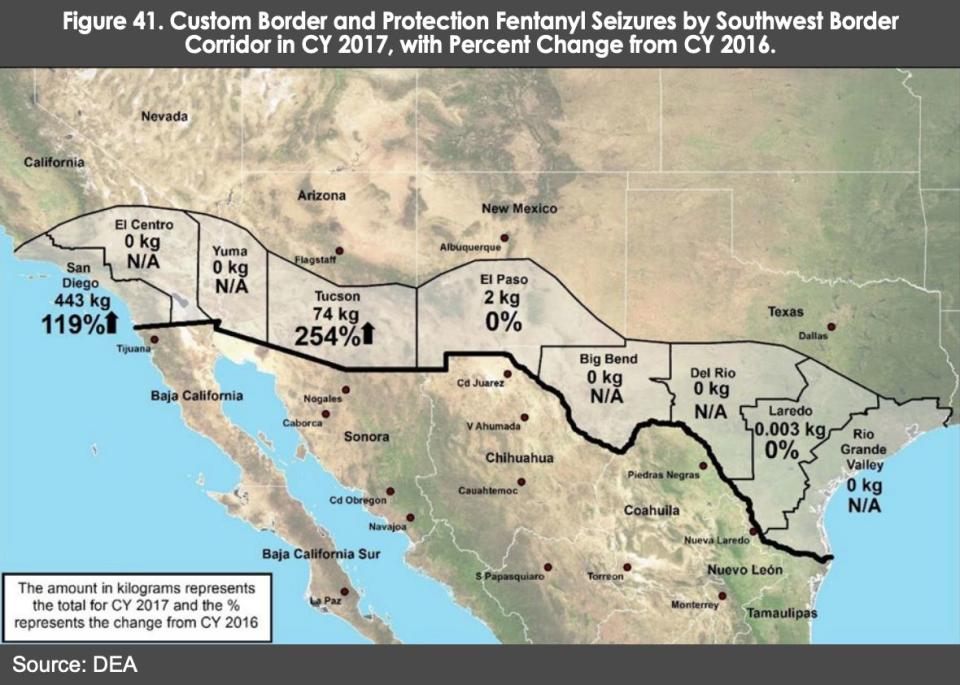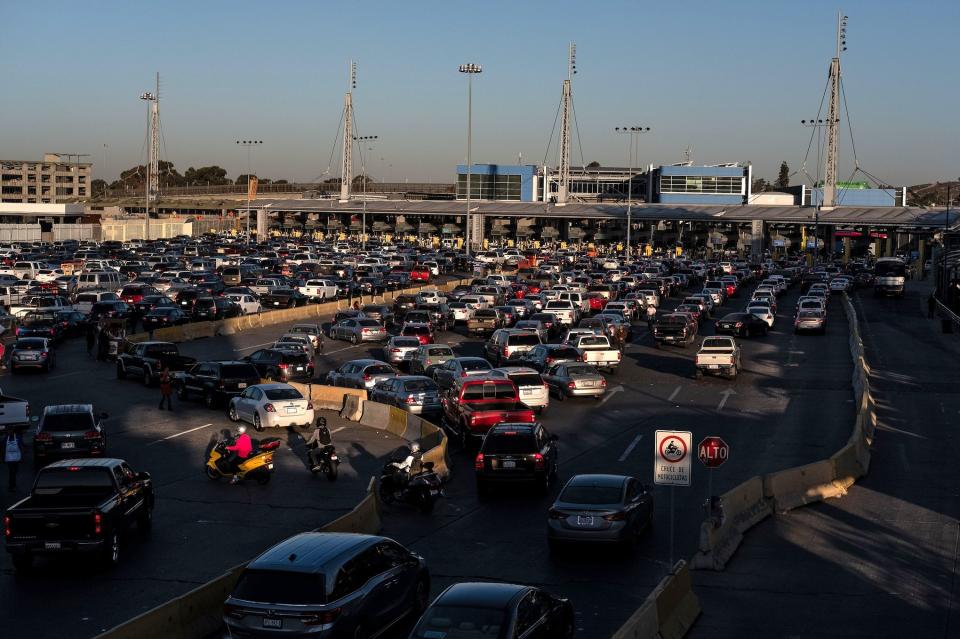Former DEA agent: Trump's wall will 'have very little effect on the flow of drugs'
Former Drug Enforcement Agency (DEA) Special Agent Jack Riley doesn’t believe that a border wall is the answer to stopping drug trafficking.
President Trump has been firm about his desire for building a wall, so much so that he declared a national emergency in order to secure funding for it. He claimed that it was a result of “an invasion of country with drugs, with human traffickers, with all types of criminals and drugs.”
Riley, a 32-year DEA veteran, told the Final Round “the wall will have some effect, and maybe a lot, on illegal alien migration, but it’s going to have very little effect on the flow of drugs. We know that 80% to 90% of the hard narcotics — heroin, fentanyl, methamphetamine, cocaine, and marijuana — come through our existing checkpoints.”

Government data supports that statement. USA Today, citing U.S. Customs and Border Protection statistics, recently reported that “90% of heroin seized along the border, 88% of cocaine, 87% of methamphetamine, and 80% of fentanyl in the first 11 months of the 2018 fiscal year was caught trying to be smuggled in at legal crossing points.”
And the DEA’s 2018 National Drug Threat Assessment stated: “The most common method employed by these TCOs (transnational criminal organizations) involves transporting illicit drugs through U.S. POEs in passenger vehicles with concealed compartments or commingled with legitimate goods on tractor trailers.”

‘You only got to bat .300 to get in the Baseball Hall of Fame’
“It just doesn’t make business sense for cartels to move high volume amount of drugs through desolate, isolated, unwell areas — it just doesn’t — when they can use ports of entry with sophisticated traps and all types of vehicles, where literally thousands of people in vehicles go back and forth every day,” Riley said. “Right now, we’re probably searching and X-raying maybe 20% of the vehicle traffic coming across.”
Riley noted how Mexican drug lord “El Chapo” smuggled drugs into the U.S. through legal points of entry. While he stood trial, none of his cartel members stated that they used “unwalled sections of the border” to traffic drugs.
“If you’re sitting on a mountain in Sinaloa as Chapo did, he would say ‘Today I’m going to shotgun 10 vehicles with 10 kilos each across the border. I got about a 60% to 70% chance of getting that much through,’’ Riley said. “You only got to bat .300 to get in the Baseball Hall of Fame. It’s a good business move.”

In terms of a better solution for combating drugs entering the U.S. than a “big, beautiful wall,” Riley suggests the U.S. government focus on improving enforcement at the existing ports of entry.
“What I want to see is our ability to upgrade existing capabilities at the ports of entry with technology and manpower,” Riley said. “And if you look at the DEA right now, it’s the No. 1 drug-fighting agency in the federal government. We’re vastly underfunded. We’re down about 500 to 600 agents. Even though we’re authorized to hire, we don’t have the budget to do it.”
Adriana is an associate editor for Yahoo Finance. Follow her on Twitter @adrianambells.
READ MORE:
Democrats: Trump's national emergency violates the Constitution
Analyst: President Trump 'is going to go to Plan B' for a border wall
How the legal fight over Trump's border wall could hurt the economy
Follow Yahoo Finance on Twitter, Facebook, Instagram, Flipboard, LinkedIn, YouTube, and reddit.
